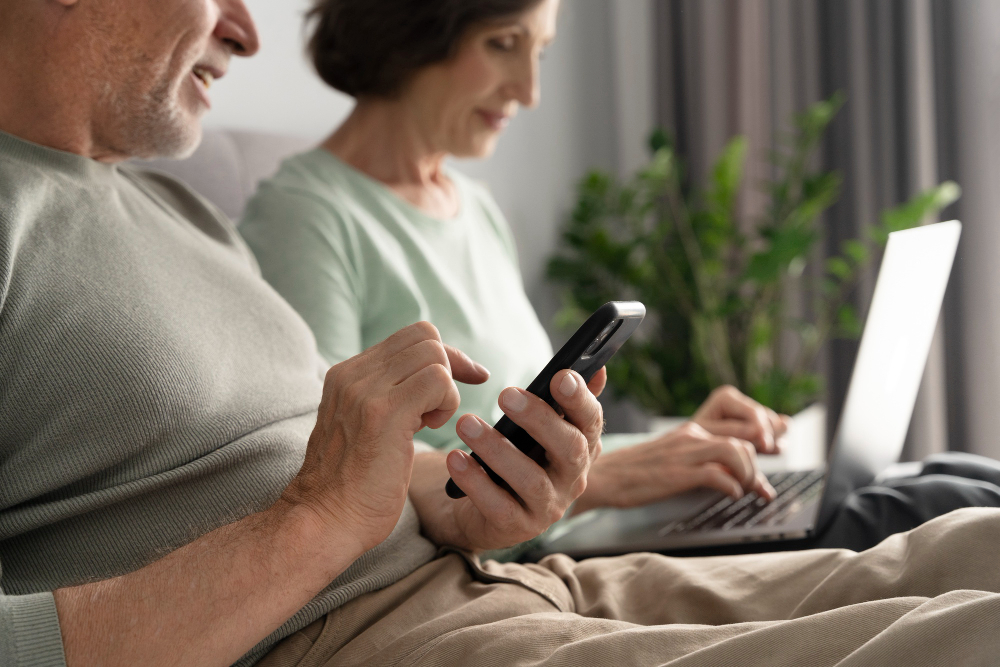Artists have long been thought of as independent souls who march to the beat of their own drum. Consequently, many artists may come across as quirky or reclusive—and many have felt reluctant to delve deeper into the emotions and mental health issues lurking beneath the surface. But in today’s era of open conversations about mental health, artists are feeling encouraged to make their struggles an open part of their creative story.
Today’s artists aren’t shying away from revealing how their personal struggles are feeding their work in the studio. Read on to learn how mental health is reshaping creative expression in the digital age!
Harnessing the Power of Social Media
While it may seem like the internet is a dumping ground for information, it has also facilitated community spaces for many people-—and that includes artists. Visual, musical, and theatre artists can use social media platforms to share their art and the emotions that fuel it. Whether an artist is struggling with depression or ADHD, they can describe their experiences in posts and reels that connect on a more personal level with their audience.
Audiences crave honest, transparent figures on social media platforms. Flashy editing can’t compete with vulnerable, raw posts from artists trying to find their way. Artists can post pictures of their finished painting or the final poem. But the captioned progress shots or reflections filmed with a handheld phone offer context and greater meaning.
Making the Most of Digital Tools
Simple, pared-down posts can provide an intimate glimpse into an artist’s working process. But for artists hoping to sustain an audience, tapping into the best digital tools can enhance their social media or website content. Animations, voiceovers, and collages are all possible using popular tools like Adobe Express or Canva. Artists can generate original illustrations with Procreate, while musicians can share original compositions created with GarageBand. The ease with which these tools can be accessed and used enables artists from all backgrounds to experiment and put themselves out there for public consumption.
For artists, these apps and digital tools can encourage unrestricted creative freedom. They empower artists to create, releasing a new song right away or sharing a sped-up reel of their painting as it comes to fruition. And they make it easier than ever to share both the work and the processes, technical and emotional, that feed into the final creative works.
Building Creative Communities Online
For artists, online spaces have helped nurture stronger communities and connections. Artists battling burnout can connect with others in similar situations. They can friend or follow fellow artists who understand their unique challenges with mental health.
Further, artists can use their visibility to share resources, like a mental health provider directory, as well. By sharing platforms for virtual therapy, artists can remove the stigma of talking openly about mental health. And as both an advocate and a creative, artists can earn more respect from their followers.
Redefining Success
Artistic success often has meant pushing oneself to the point of burnout. But burnout is not the goal in today’s climate of support for self-care and transparency. Artists are prioritizing their mental health, allowing themselves to take time away from projects to maintain a better work-life balance.
Artists aren’t shy about sharing their reasons for stepping away from projects, either. Online platforms allow artists to post candid videos or text-based posts. If an artist is overwhelmed with work or dealing with relationship struggles, they can feel confident that they’ll have supportive readers. Posting online can be a way to process feelings or simply let followers know that it’s time to step back. Sometimes an artist needs to disconnect to give their mind time to recover from a difficult situation.
Sharing the Creative Journey Openly
Mental health doesn’t have to reside behind the scenes for today’s artists. Instead, artists can be open about their bouts of anxiety or feelings of burnout with their online community. Artists of all experience levels can use digital tools to craft compelling posts that are vulnerable, honing their communication skills and creative juices in the process. Ultimately, artists can gain confidence and control by narrating how their mental health journey and artistic practice intertwine.

